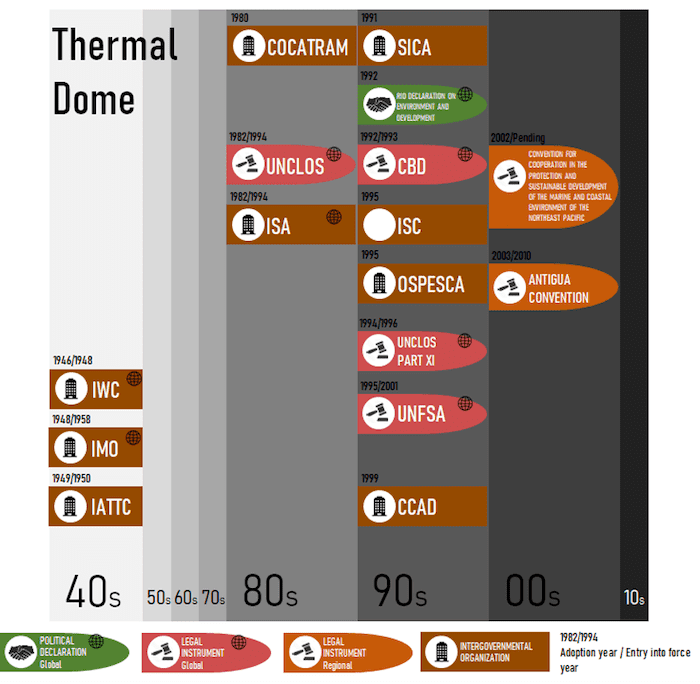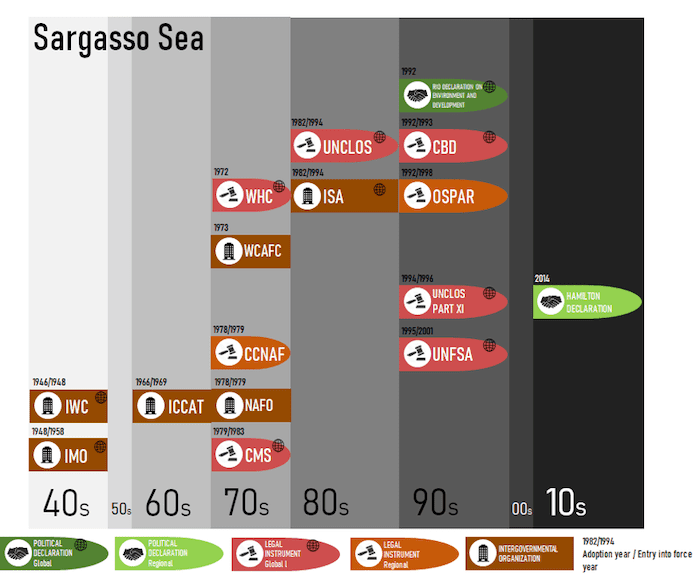THE PROJECT
Project Overview
The Thermal Dome in the Eastern Tropical Pacific Ocean and the Sargasso Sea in the North Atlantic Ocean are two unique initiatives to serve as pilot cases to advance conservation in the high seas and to test and promote the concept of hybrid governance, i.e. modes of governance that combine a regional approach and a global approach on the high seas.
With SARGADOM we want to :
- Contribute to the protection of biodiversity and associated ecosystem services in the high sea in the Thermal Dome and the Sargasso Sea
- Incorporate & contribute to the BBNJ implementation, in particular on the processes for identifying and designating Area Based Management Tools (ABMTs) including Marine Protected Areas (MPAs)
- Informe on possible hybrid governance implementation models, including regional and international/global components
Strategy
It is based on a socio-ecosystem diagnostic analysis in each site, and an analysis of the current governance of the two sites and potential improvements, which will lead to the development of proposals to improve the governance and to establish conservation and management measures in these sites
THE TWO SITES

Thermal Dome
The Thermal Dome is located within and beyond the Exclusive Economic Zones (EEZs) of Central American countries in the Eastern Tropical Pacific. It is a phenomenon formed by the convergence of trade winds and sea currents that cause deep, cold and nutrient-rich waters to rise (upwelling). The thermocline is thus “lifted” up to about 15 meters from the surface, giving, through its bell shape, its name of “dome”. The size and location of the Thermal Dome is dynamic. Its average surface area is 530,000 km². Its central zone is located around 9°N and 90°W, more than 65 km west of the borders of the EEZs of Costa Rica and Nicaragua, i.e. beyond their respective national jurisdictions.
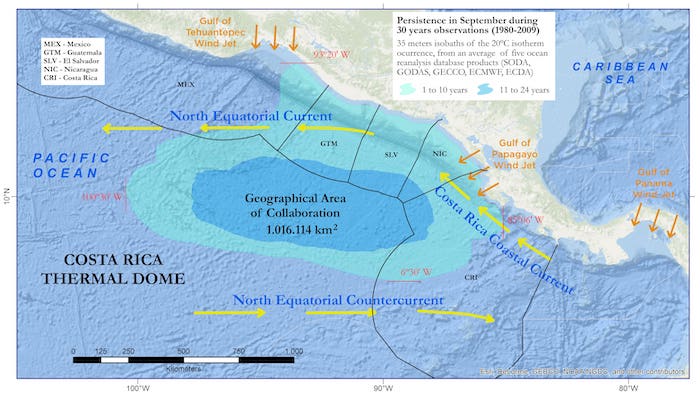
The Thermal Dome area does not benefit from a strong and established framework of regional governance. However, the presence of the Central American Commission on Environment and Development (CCAD) should be noted. The CCAD, an organization belonging to the SICA (Central American Integration System), was created in 1989. Its role is to enhance the natural heritage of the region through the reasonable use of resources and the control of pollution. Through its competent committee on marine issues, it shows a strong interest in the governance and management of the Thermal Dome. Since 2014, the regional NGO MarViva, with the support of the government of Costa Rica and other Central American governments, has been leading an initiative to improve the governance of the Thermal Dome.
Before the beginning of SARGADOM
- 2014 – Upwelling System of Papagayo and adjacent areas Ecologically or Biologically Significant Marine Area (EBSA)

Sargasso Sea
The Sargasso Sea is a two-million square mile open ocean ecosystem, bounded by the circulating currents of the North Atlantic Gyre. The Gulf Stream forms its Western limit and the North Atlantic Current forms its northern limit, the Canary Current acts as a more diffuse eastern limit, and the Northern Equatorial Current together with the Caribbean Current, form the southern limit. Only the small islands of Bermuda have a direct coastline on the Sargasso Sea.
The foundation of this incredible pelagic ecosystem is the floating, golden Sargassum seaweed for which the sea is named. As well as supporting ten fascinating endemic species, Sargassum acts as critical nursery habitat for many species of pelagic fish and several species of sea turtle. The Sargasso Sea is the only known spawning area for two species of endangered anguillid eel – which transition from marine breeding grounds to freshwater feeding grounds. It also acts as a migratory corridor for several species of sharks, rays, and cetaceans. The Sargasso Sea is threatened by various pressures – including impacts from shipping, fishing, plastic and other pollutants, and climate change.
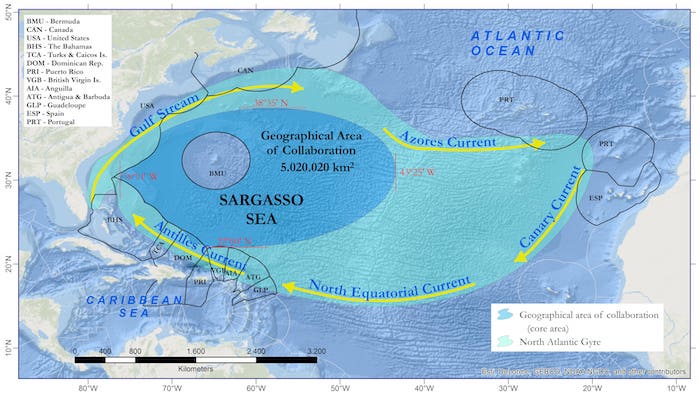
Since 2010, the Sargasso Sea Project, developed in association with IUCN and other partners and led by the Government of Bermuda, has been working with a wide range of stakeholders from government, academia and the private sector, as well as interested collaborators, to bring the importance of the Sargasso Sea ecosystem to the attention of the international community. It seeks to use existing competent international organizations to implement conservation measures for the Sargasso Sea, and to use this process as a model for other regions. In 2014, governments met in Bermuda to sign the Hamilton Declaration on Collaboration for the Conservation of the Sargasso Sea, which as of 2023 has a total of ten government signatories (The Azores, Bahamas, Bermuda, British Virgin Islands, Canada, Cayman Islands, Dominican Republic, Monaco, the United Kingdom and the United States). It is a non-binding political agreement between interested governments located in the wider Sargasso Sea region or with an interest in the conservation of the high seas. The Sargasso Sea Commission, an independent body established by a political declaration, has been described as a new paradigm for governance on the high seas.
–
The work done on the Sargasso Sea site is co-financed by the Global Environment Facility (GEF), see more details here.
Existing stewardship mechanisms before the beginning of SARGADOM
- 2011 – Collaboration Arrangement with OSPAR
- 2012 – Sargasso Sea Ecologically or Biologically Significant Marine Area (EBSA)
- 2014 – Hamilton Declaration
- 2014 – Listing of European Eel under Appendix II of CMS
- 2017 – NAFO seamount closure for bottom fishing activities
- 2017-2026 – Corner Rise Seamounts Vulnerable Marine Ecosystem (VME)
- 2017-2026 – New England Seamounts Vulnerable Marine Ecosystem (VME)
- 2017 – MOU with the UN Environment Programme in relation to the West African Abidjan and the Wider Caribbean Cartagena Conventions
- Observer status with the Northwest Atlantic Fisheries Organization, the International Seabed Authority, the Western Central Atlantic Fisheries Commission, and the Inter-American Convention for the Protection and Conservation of Sea Turtles.
Socio-Ecosystem Diagnostic Analysis
SEDA aims to identify the importance of the ecosystem in question, the value of its goods and services, who benefits from these goods and services, what the threats and real/potential impacts are to the ecosystem and its goods and services and how these threats might be mitigated or eradicated.
A common strategy is built inspired by the TDA-SAP approach developed by GEF and other DPSIR applications for marine management.
The SEDA will provide a baseline to guide the long-term collaborative monitoring of the natural resources and their conservation by the relevant instruments, framework and bodies (IFBs).
Articulation of knowledge to develop an argument related to conservation issues
Put forward the argument towards those with action competency
In practice, in any context and particularly in the high seas, the main technical role of a SEDA is to identify, quantify, and set priorities for environmental problems that threaten the long-term integrity and sustainability of the ecosystem. In particular, the SEDA aims to:
- Identify and prioritize the problems within the socio-ecosystem.
- Gather and interpret information on the environmental issues and socio-economic consequences of each problem.
- Analyze the causes for each problem, and in particular identify specific biological, chemical and physical processes at work, human activity sectors, sources, locations, and human practices from which environmental degradation arises or threatens to arise, as well as those generated by climate change and natural risks.
- Build a comprehensive governance and management analysis since the underlying causes of the vast majority of environmental problems stem directly or indirectly from human activities that are subject to policy and governance frameworks, where options for action can be identified. This includes a review of barriers and enablers for implementation, including economic evaluation.
Two parallel SEDA assessments will be produced by the project – one for the Thermal Dome and one for the Sargasso Sea.
Managment, policy and governance
Following the SEDA, which involves in-depth and regular consultations with the relevant authorities and governments concerned, as well as academia, NGOs, the private sector and other stakeholders, sectoral and multi-sectoral consultation modalities will be set up to establish management rules. Stakeholders for the two sites will endorse the modalities of appropriate governance for each of the two sites, which will be the subject of proposals at the end of the project.
Discussions and consultations will involve experts and institutions, including the private sector, management organizations and, where appropriate, coastal communities. The two sites work closely together, taking into account and benefiting from the different policy environments of each.
SEDA – Strategic Action Programme (SAP) articulation
The SEDA is based on a reasoned and multi-sectoral consideration of threats facing the two sites, and it is the factual basis for the formulation of the Strategic Action Programme (SAP). The SAP sets out the actions that are required by all the partners, who will be involved in adopting the SAP in order to address the impacts and threats highlighted in the SEDA. It outlines what the policy, legal, and institutional improvements and investments are needed to resolve the priority ecosystem problems identified through the SEDA. This is a negotiated document because it has political, legal and administrative implications.
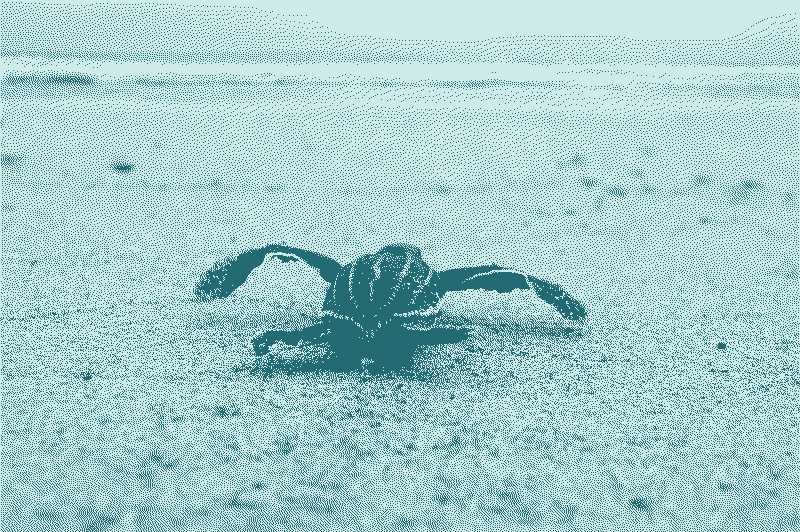
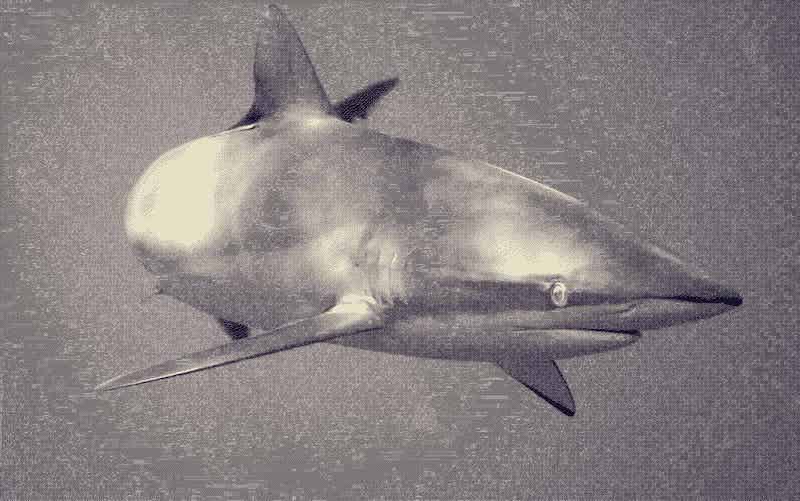
Existing mesures
Before the project
During the project
Thermal Dome
At the Central American level, MarViva and its local partners are working with Central American national governments to integrate the initiative around the Thermal Dome into the CCAD regional maritime agenda.
Sargasso Sea
The Sargasso Sea project has been operating to strengthen the stewardship of the Sargasso Sea for over a decade – so it has established networks and relationships with sectoral, regional, and international actors relevant to high seas conservation.
The Sargasso Sea Commission Secretariat meets regularly with the ten governments that have signed the Hamilton Declaration in order to develop and generate support for the Commission’s work programme. In addition, the Secretariat meets regularly with the seven independent scientific experts elected to serve on the Sargasso Sea Commission, who offer technical and scientific perspectives.
A first science case was developed for the Sargasso Sea in 2011, but much has changed since then. The strategy of the Commission is to generate accurate scientific information justifying the importance and need for protection of the Sargasso Sea – and to generate high level political and industry buy-in for conservation measures over the area of collaboration.
A major part of the project will be the development of a Strategic Action Programme identifying priority actions and strategic partnerships to address impacts and threats to the ecosystem, which will be endorsed by key stakeholders to the Sargasso Sea. This will be followed by a road map and budget for implementing the SAP.
The work done on the Sargasso Sea site is co-financed by the Global Environment Facility (GEF), see more details here.

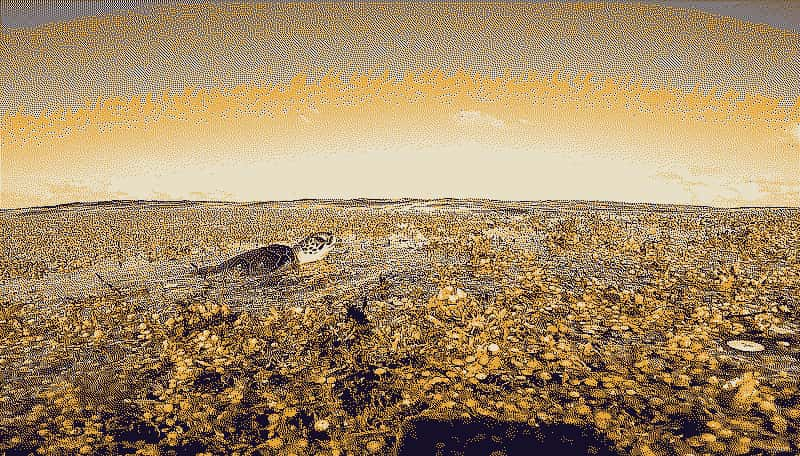
Existing mesures
Before the project
-
Collaboration Arrangement with OSPAR 2011
-
Sargasso Sea EBSA* 2012
*Ecologically or Biologically Significant Marine Area under the Convention on Biological Diversity (CBD)
-
Hamilton Declaration 2014
-
Listing of European Eel under Appendix II of CMS 2014
-
NAFO seamount closure for bottom fishing activities 2017
2017-2026 - Corner Rise Seamounts VME | 2017-2026 - New England Seamounts VME
-
MOU with the UNEP 2017
in relation to the West African Abidjan and the Wider Caribbean Cartagena Conventions
-
International Seabed Authority (ISA) MoU 2020
Observer Status & MoU
-
Single Species Action Plan for European Eel under the CMS* 2020
Convention on Migratory Species
-
Observer status
with the NAFO, the ISA, the Western Central Atlantic Fisheries Commission (WECAFC), and the IAC
During the project
-
IAC* MoU 2023
*Inter-American Convention for the Protection and Conservation of Sea Turtles
-
MoU with NAFO* 2023
*North-west Atlantic Fisheries Organization
-
MoU with ICCAT* 2024
*International Commission for the Conservation of Atlantic Tunas
-
OSPAR* MoU 2024
*Convention for the Protection of the Marine Environment of the North-East Atlantic
-
Sargasso Sea PSSA* In progress
*Particularly Sensitive Sea Area
Capacity building
Lessons learned will be distributed through various capacity building activities, including the development of a multilingual Massive Open Online Course (MOOC) on governance and conservation on the high seas.

